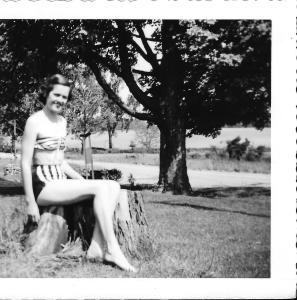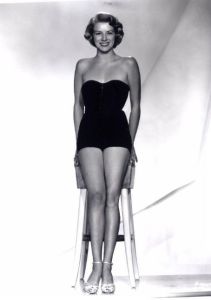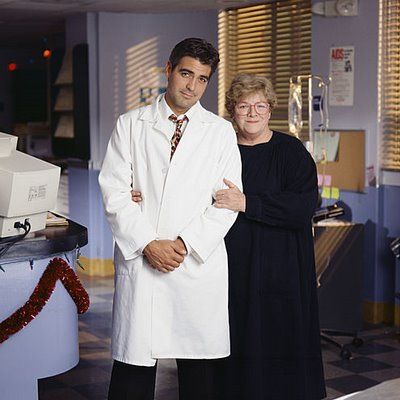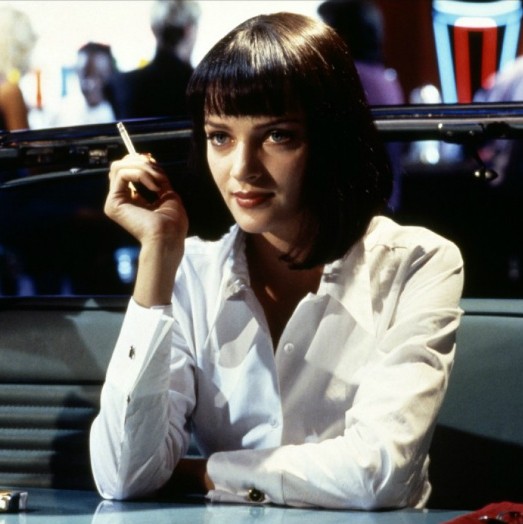This Catch Up is written by Telaina Eriksen
Year of Release 1954
Spoilers? Nope
Yesterday as I ran some pre-Christmas errands, I turned on the radio to a classic Christmas music channel. I like the old stuff. I think if I hear Mariah Carey’s “All I Want for Christmas is You” ever again I may puncture my own ear drums. Especially when things like Louis Armstrong’s “Zat You Santa Claus” are out there. As I was on the way to the grocery store, the station played Rosemary Clooney’s “Count Your Blessings.” For those of you who have lived your life in a cave, this is one of the featured songs from the holiday classic White Christmas. The recording I heard yesterday was a more recent one—I could tell. It was just Clooney, not Clooney and Bing Crosby. And Clooney’s voice was different, still wonderful, but older, raspier, more mature. She recorded basically up until her death in 2002, so I’m not sure what year I heard her singing from, but when I heard the song, I started to cry. And I’m not a crier.
2016 has been both a wonderful and difficult year. On the upside, my kids are doing well and I got my first book deal. On the downside, I’ve been in a state of depression since Donald Trump became president-elect. People in my own family actually voted for him. They didn’t care that he sexually assaulted women. They didn’t care that his running mate thinks my LGBTQ friends and family members deserve electro-shock treatment or worse. They didn’t care about the racist things he said and they didn’t care about obvious signs of his fascism, corruption, and kleptocracy. Trained in family loyalty, I didn’t know how to speak with or interact with family members who had just voted against my own daughter’s right to marry, to be Out, to hell, fucking even exist, I deactivated my Facebook account and haven’t spoken to those family members since the election. At this point, the betrayal I feel is so deep and thorough, I do not know if I will ever speak to them again. (I can’t even mention my sorrow over the deaths of Prince, Alan Rickman, Guy Clark, David Bowie, etc. etc. in 2016 or I will derail this whole Catch Up.)
One of the reasons I started to cry was because pretty much everyone in my family loved the movie White Christmas. Or at least they tolerated it enough to enjoy it around Christmastime. As unimaginable as it seems, I remember the days before all of this high (and low) quality content at our fingertips. I remember checking the TV listings in the newspaper of in the TV Guide to see what time and station White Christmas would be on. My mother especially loved this movie. The dresses, the voices, the dancing of Vera-Ellen and Danny Kaye.

My mother, late 1940s
My mother also really loved Rosemary Clooney, who I believe she identified with. She never said, “I really identify with Rosemary Clooney.” But now that I’m older and a mom myself, I can see that she did. Clooney had a difficult life—bipolar disorder, prescription drug abuse, many close friends and family members, including Robert F. Kennedy, died tragically. (Clooney was either in the room, or the room next door, when he was assassinated.) Clooney had a nervous breakdown, lost her fortune, suffered two divorces, bore five children, all while working. My mother’s problems were similar, but without the fame and fortune. My mother was also a prescription drug addict, had mental health problems, had seven children, and she also had lost so much in her life—all three of her brothers to cancer and her father when she was a young mother herself. My mother’s relationship with my father was not good. It was never what she wanted. HE was never what she wanted.

Rosemary Clooney, 1940s
I heard Rosemary Clooney’s older voice and I didn’t just have a single memory. I had an image. An image that I don’t even know if it happened, or if it is just an amalgamation of good times that did happen. I saw us in our tiny living room, most of us on the floor because there was never enough seating and my mother always got one whole couch to herself. I remember the blue carpet that we got as a handmedown from my grandmother. A lamp near my mother’s head that I had once seen shake in one of Michigan’s rare earthquakes. A large majority of the family watching White Christmas. My dad sitting at the kitchen table, smoking a cigarette, not able to see the TV, just hear it. A cup of coffee in front of him. An ashtray by his elbow. I can remember my excitement—my favorite songs then “Sisters” (which my sisters and I still sing somewhat sarcastically to each other) and “We’ll Follow the Old Man.” You couldn’t hear them any time. You couldn’t google and listen on YouTube, or even buy a CD. This was a once-a-year opportunity.
It was a good image. A good memory. There is no hint of betrayal that I currently feel. Just excitement for Christmas Day and a sense of longing at the pretty costumes in the movie. The lovely songs. No knowledge of the pain (or the joy) to come in my life.

Mom and me 2016
My mother was happy when Rosemary Clooney made her comeback. I don’t think she saw it, but she was pleased George Clooney had gotten his aunt a guest spot on the popular show E.R. She was nominated for an Emmy for that appearance.

George Clooney and Rosemary Clooney 1995
As Rosemary Clooney got more work on television again, I was living away from home, working, getting engaged, getting married. But I would still make the trip home for Christmas each year. I also paid more attention to how my mother spoke about Vera-Ellen’s body and her rumored eating disorder when we watched White Christmas, now on fancy VHS. My mother spoke of Vera-Ellen’s disorder as shameful. But I could also hear the envy in her voice as she looked down at herself, at what she considered to be her own ruined body.

Vera-Ellen dancing in White Christmas 1954
I sat in my minivan yesterday and I didn’t know what to do with all these emotions Clooney’s voice evoked. I thought of how hard it is to be a woman in the world. How hard it is to have a body that is considered to be without worth. I thought about the pain of losing family by death, by neglect, by misunderstanding, and by deed.
I thought of how two people in my pre-Christmas image/memory are dead after brutal lives and more brutal illnesses. I thought of how I’ve managed to go see my mother in the nursing home a few times, but that chasm is so great between us (the person I am and the person she thinks she knows) we can’t do much but talk about other family members, old memories, and my pets. I thought of how my country, throughout its history always both beautiful and tragic, had spat up such a narcissistic lying brute to be our leader.
Why?
How do I have a relationship with people who are so unfeeling and uncaring that they would vote for someone who stands against every Civil Right for the marginalized that has been gained over these last 60 years?
Count Your Blessings is a simple song from a time we pretend is simpler, but it really wasn’t. Look at the cast of White Christmas—look at the lives of those stars. Mental illness, eating disorders, divorce. Look at the systemic racism in Hollywood. But the song itself represents a simplicity we as Americans long for.
When I’m worried and I can’t sleep
I count my blessings instead of sheep
And I fall asleep counting my blessings
When my bankroll is getting small
I think of when I had none at all
But this sweet, rhyming song might be the only way forward. Listing blessings. Taking action. Praying for peace. Seeing the good when there seems to be nothing but bad surrounding us. (I’m fucking looking at you, 2016.)
And I fall asleep counting my blessings
Merry Christmas, Catch Up Readers. (Because despite what the conservative narrative says, liberals say that quite often.)
*Thanks to Google images for the lovely old photos. I don’t own them and am in no way claiming their copyright. The photos of my mother are mine.

